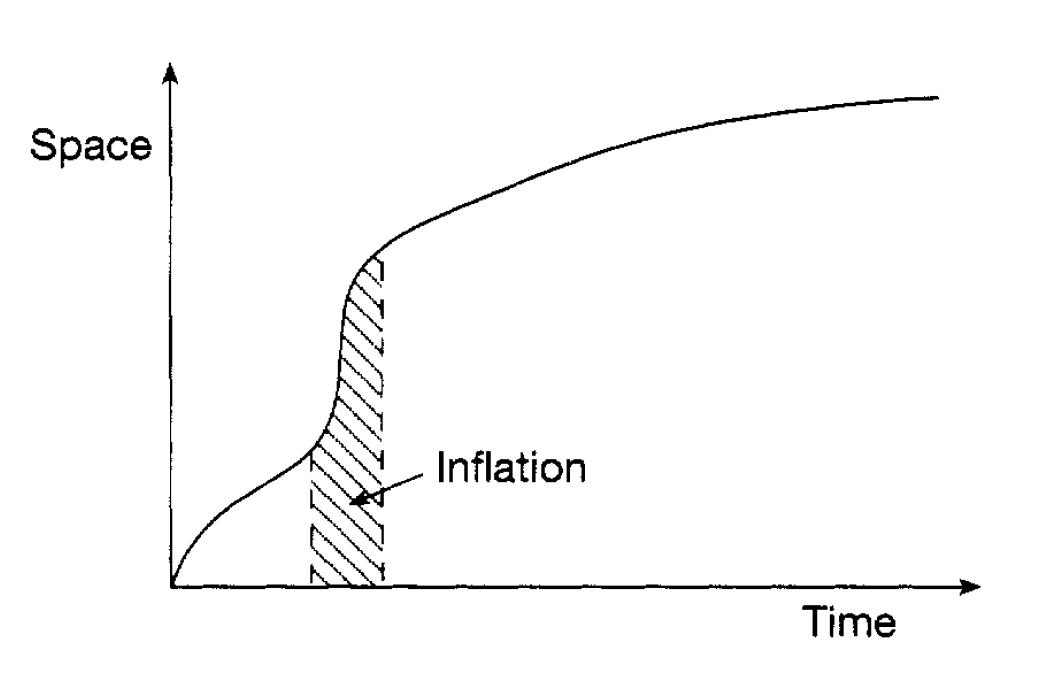
Problems and Conjectures
 المؤلف:
Roger J Blin-Stoyle, FRS
المؤلف:
Roger J Blin-Stoyle, FRS
 المصدر:
Physics of Particles, Matter and the Universe
المصدر:
Physics of Particles, Matter and the Universe
 الجزء والصفحة:
p 181
الجزء والصفحة:
p 181
 26-5-2016
26-5-2016
 2425
2425
Problems and Conjectures
In the foregoing sections a desciption has been given of what might be called the ‘standard theory’ of the evolution of the universe. The idea of the big bang is supported experimentally by the observed expansion of the universe, the all-pervading presence of microwave background radiation and the relative abundance of helium and hydrogen. However it is not all plain sailing and there are several important issues which require further discussion. First, there is the remarkable uniformity of the background radiation intensity which, at any point in the universe, is the same to better than one part in a thousand. We saw that until a hundred thousand years or more had elapsed after the big bang there were free electrons in the universe. These would have interacted strongly with electromagnetic radiation and it was not until they had been absorbed into atoms that the radiation would have been ‘free’ as we now see it, but when this occurred different parts of the universe were ‘out of touch’ with each other since they were so far apart that there was not time for communication, even at the speed of light, to take place. So it is hard to understand how the uniformity arose since there could have been different developments in these ‘out of touch’ regions. A solution to this problem, originally proposed by Guth in 1980 and subsequently much developed and discussed, is that, for a very brief period, the very early universe roughly doubled its size every 10-34s. This is referred to as the inflationary universe. The nature of this sort of rapid expansion is illustrated in figure 10.4 and is very different from the rate of expansion for the early stages of the universe illustrated. Such an inflationary rate of

Figure 1.1: Inflationary expansion of the universe.
expansion is absolutely formidable and would correspond, for example, to something the size of a tennis ball expanding to the size of the observable universe in only 10-32 s. In this time it would have successively doubled its size one hundred times. This means that the universe could have been very much smaller in its early stages so that the different regions would no longer have been ‘out of touch’ and the uniformity of the background radiation can, in these terms, be understood. Second, we have seen that the future of the universe depends on its energy density and that there is a critical value for which space time in the universe is ‘flat’ the expansion, as it were, continually slows down as the universe heads towards infinite size. Estimates of the amount of matter in the universe including that which is shining (stars etc) and that which is so called dark matter (e.g. dust, brown stars, additional matter deduced to be present from its gravitational effect on the motion of stars in galaxies) suggest that the energy density is somewhat less than the critical value. However, it may be that masses of neutrinos are not exactly zero and the vast number of neutrinos pervading space following the big bang could then bring the energy density of the universe up to the critical value. Here it is interesting to note that the number of electron neutrinos (ve) detected on earth emanating from the fusion processes taking place in the sun is found to be less than expected. This could be due to them having a finite mass which would allow some of them to change into muon neutrinos on their way to the earth and so be undetected. It might also be that additional particles, which would be necessary to achieve unification of the weak, electric and strong interactions, are around in the universe, contributing additionally to its energy density. What is remarkable is that although the energy density could, in principle be millions of times bigger or smaller than the critical value, the evidence is that it is fairly close to it. It is therefore attractive to feel that it might have precisely that value. Here it is interesting to note that the inflationary process just discussed can, in fact, lead to the universe having precisely the critical energy density. The attraction of this possibility is further increased by the fact that in such a universe the (positive) energy due to the mass in the universe (mc2) is exactly balanced by the (negative) energy due to gravitational attraction so that the net energy of the universe is zero. Third, the earliest stages of the big bang the number of photons outnumbered the number of protons by a factor of the order of l09. These photons would have had extremely high energy and could therefore have produced endless pairs of protons and antiprotons through the pair creation process in connection with the production of electrons and positron (antielectron) pairs. Thus the natural expectation would be that the universe should contain equal amounts of matter and antimatter, which in due course would annihilate each other, rather than being entirely composed of matter as seems to be the case. It is encouraging that the idea of unification discussed at with its possibility of baryon and lepton non-conservation, coupled with the time reversal non-invariance properties of the K0 meson, may provide a way of creating a slight imbalance between matter and antimatter so that, after mutual annihilation, there is only the residual matter of our present day universe. Conversely, the existence of a ‘matter only’ universe can be taken as supportive evidence for the form of unified theories being suggested.
 الاكثر قراءة في مواضيع عامة في علم الفلك
الاكثر قراءة في مواضيع عامة في علم الفلك
 اخر الاخبار
اخر الاخبار
اخبار العتبة العباسية المقدسة


